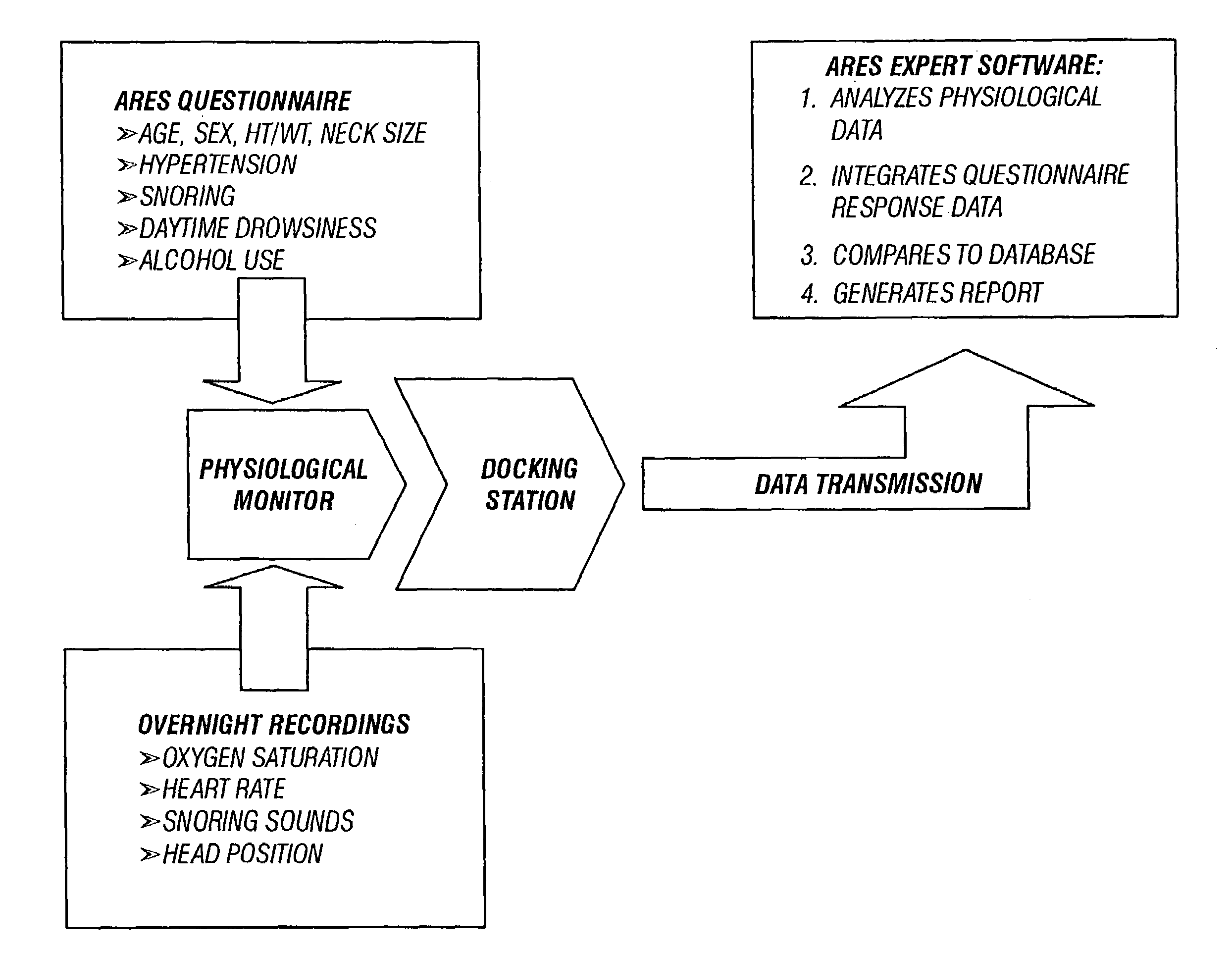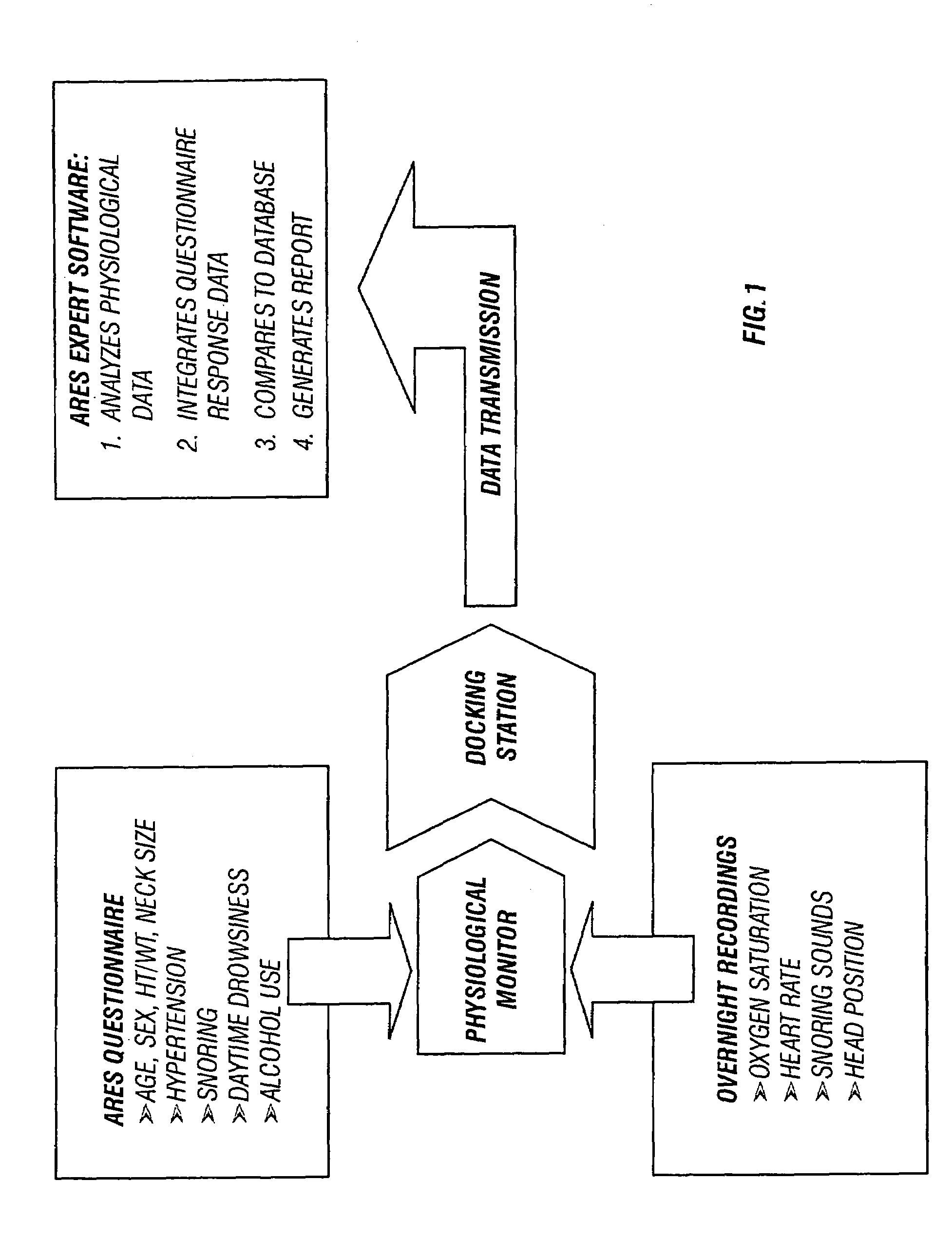Sleep apnea risk evaluation
a risk evaluation and sleep apnea technology, applied in the field of sleep apnea risk evaluation, can solve the problems of apnea or hypopnea, sa is a serious, yet treatable health problem for individuals, and the inability to breathe adequately during sleep, so as to improve the detection accuracy and resolution, and improve the effect of sleep apnea detection
- Summary
- Abstract
- Description
- Claims
- Application Information
AI Technical Summary
Benefits of technology
Problems solved by technology
Method used
Image
Examples
Embodiment Construction
[0054]As indicated above, a monitoring system constructed in accordance with the present invention provides a device that reliably detects a patient's sleep apnea condition without excessive intrusion into the patient's sleep experience. FIG. 1 shows a block diagram of the mechanisms for collecting data and evaluating risk for sleep apnea, in accordance with the invention. As indicated in FIG. 1, the preferred embodiment includes an Apnea Risk Evaluation System (ARES) questionnaire that is filled out by a sleep study patient. Those skilled in the art will be familiar with the questions that are posed to patients being evaluated for sleep apnea, and will be able to construct such a questionnaire without further explanation. The questionnaire thereby provides information that can be submitted to discriminant function or other type of analysis that can be used to assign risk categories based on questionnaire responses. In addition to patient responses elicited by the questionnaire, ove...
PUM
 Login to View More
Login to View More Abstract
Description
Claims
Application Information
 Login to View More
Login to View More - R&D
- Intellectual Property
- Life Sciences
- Materials
- Tech Scout
- Unparalleled Data Quality
- Higher Quality Content
- 60% Fewer Hallucinations
Browse by: Latest US Patents, China's latest patents, Technical Efficacy Thesaurus, Application Domain, Technology Topic, Popular Technical Reports.
© 2025 PatSnap. All rights reserved.Legal|Privacy policy|Modern Slavery Act Transparency Statement|Sitemap|About US| Contact US: help@patsnap.com



